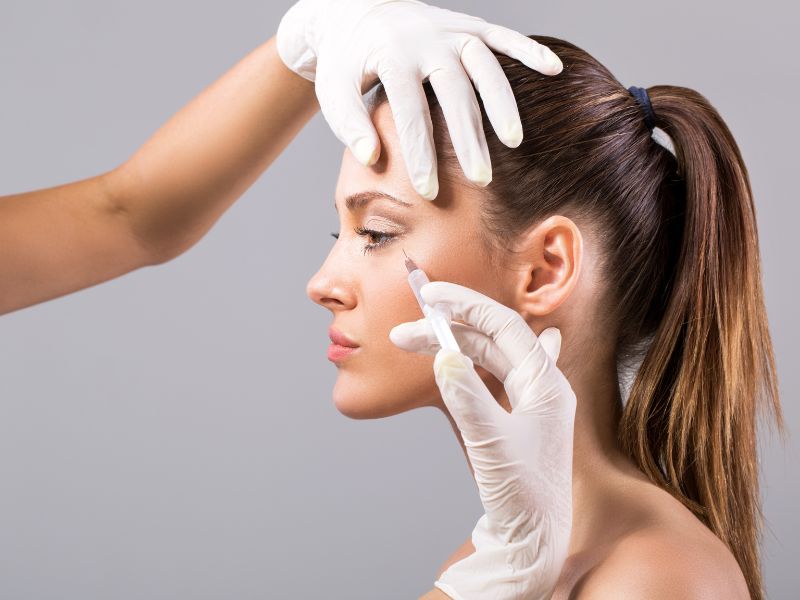
What Is the Difference Between Botox and Fillers?
The terms Botox and Fillers get thrown around quite a bit when it comes to facial rejuvenation. That is because both are safe and popular treatments used to smooth away wrinkles, sagging skin, and other signs of aging. But that is where the similarities end.
Let’s dive deeper! What is Botox®?
Botox® is actually the brand name for the protein onabotulinumtoxinA, a molecule isolated from the toxin of the bacteria Clostridium botulinum, which interferes with signals between a nerve and its muscle fiber, essentially blocking communication between nerves and muscles. This results in the muscle’s temporary inability to produce movement, also called paralysis. When the muscles don’t move, the skin overlying those muscles also moves less, resulting in less wrinkling.
Injection of the product into specific muscles results in temporary paralysis of those muscles leading to reduction in the appearance of wrinkles and fine lines caused by repetitive facial movements. This is why Botox is commonly used to treat wrinkles caused by movement, also called dynamic wrinkles. The most popular dynamic wrinkles that are well treated with Botox are the forehead lines, frown lines between the eyebrows and crow’s feet, or the horizontal lines around the eyes. When injected by an experienced injector other muscles around the face can also be targeted for specific results, such as correction of a gummy smile.
Due of the fact that the active protein is derived from a toxin and its activity occurs at the nerve endings, it is commonly referred to as a “neurotoxin”. Botox has become synonymous with injectable neurotoxin and it is often used as a blanket term because it was the first FDA-approved neurotoxin for the treatment of dynamic wrinkles, making it one of the oldest and best studied on the market. Most recently, other neurotoxins have gained popularity such as Xeomin ® (pronounced Zee-o-min) and Dysport ® (pronounced Dis-port).
The effect of Botox® and other similar neurotoxins usually lasts about three to four months, after which the treatment needs to be repeated. At Essenza by MD ™ we offer all of the above neurotoxins, contact us (hyperlink to booking) to find out which one may be right for you.
HoW about cosmetic fillers?
On the other hand, “filler” refers to dermal fillers or soft tissue fillers. These are injectable substances, commonly made up of hyaluronic acid, which add volume to specific areas of the face effectively filling in wrinkles, lines, and hollowed areas. Unlike Botox which targets muscle activity, fillers work by plumping up and restoring lost volume. They do not have any action on the muscles and are used to correct wrinkles and furrows which are present even at rest, known as static wrinkles. In addition, fillers are used to enhance facial contours, add fullness to the lips and improve the appearance of sunken cheeks or under-eye hollows.
In summary, Botox works by temporarily relaxing muscles to reduce the appearance of wrinkles caused by facial movements, while fillers add volume to the skin resulting in diminished wrinkles and enhanced facial contours. The choice between Botox and filler depends on the area of concern and desired outcomes. Because they have different mechanisms of action and target different kinds of wrinkles, Botox and fillers can complement each other and are, in fact, often used together to achieve desired outcomes. At Essenza by MD ™ we have experience working with both Botox and fillers and are committed to helping you achieve your beauty goals.



